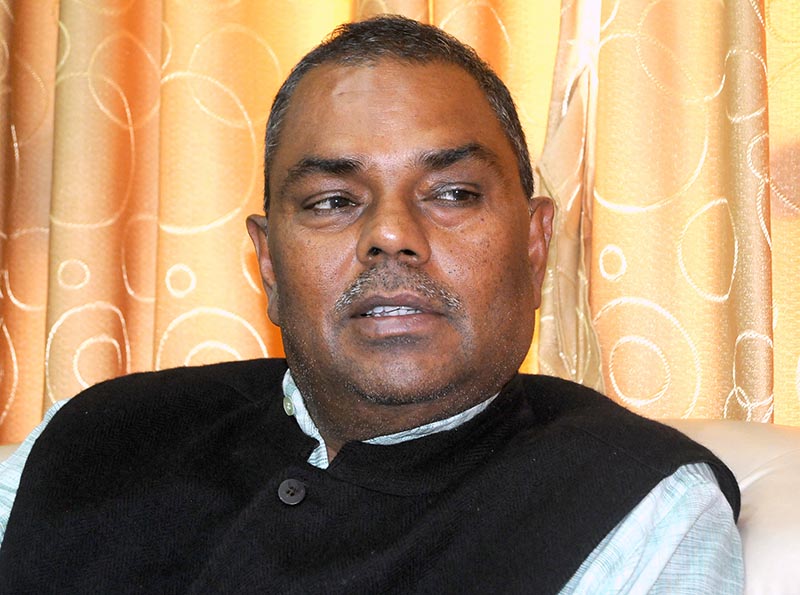RJP-N, SP-N likely to merge before their general conventions
Kathmandu, August 16
Leaders representing Samajwadi Party-Nepal and Rastriya Janata Party-Nepal have intensified efforts to unify their parties, and are meeting almost every day to discuss unification modality and issues.
A RJP-N leader told THT that top leaders of both parties were of the view that it would be better if they sealed their unity deal before their general conventions or else it would be difficult to pacify disgruntled leaders within their parties.
The RJP-N leader said chances were high that unity deal could be sealed between the two parties before their general conventions. Both the parties are set to hold general conventions in next three months.
SP-N leader Upendra Yadav, however, said both the parties were positive about the merger, but they had not yet discussed any issues seriously. Another RJP-N leader said the two parties were discussing about the modality of ranking of top leaders, common political ideology, and structure of the party’s leadership, party’s name and symbol, forms of governance, electoral system and statute. The leader said ideological issues could be tackled by unity convention, but since Madhes was the two parties’ political bastion, it would be better if the RJP-N leader Mahantha Thakur was given first place in party’s seniority list.
Both Upendra Yadav and Baburam Bhattarai of the SP-N come from communist background, and therefore, it would be important for the party to accord first priority to Thakur who is a democratic face with unwavering commitment to democracy, the RJP-N leader argued.
Yadav, however, said there was no proposal from the RJP-N to make Thakur as the senior-most leader of the party.
A source privy to the ongoing negotiation between the two parties said the RJP-N’s proposal to place Thakur at the top in the party ranking following merger had posed challenge to the SP-N which has accorded the status of the senior-most leader of the party to Baburam Bhattarai as he was a former prime minister.
The RJP-N leader said if the two parties were merged, ideological issues, including forms of governance and electoral system could be decided by unity convention. SP-N advocates presidential form of government and fully proportional electoral system whereas RJP-N advocates parliamentary form of governance and mixed electoral system.
Political analyst Tula Narayan Shah said the two parties realised that they had no better option than to unify their parties to create enough pressure on the ruling Nepal Communist Party (NCP). “There is a realisation in both SP-N and RJP-N that if they do not unite, the NCP-led government that forced Federal Public Service Commission to start the process of recruiting over 9,000 employees at local levels, could take more steps to derail the process of social inclusion and even federalism,” Shah added.
Shah said both the parties also realised that they needed to merge to win confidence of all communities, including Khas Arya group to intensify their struggle for empowerment of marginalised communities. “In the past, Madhes movement led to polarisation between Madhesis and Pahadi communities. Now these two parties have realised that they needed to chart out strategies to fight against privileged communities for the sake of deprived communities,” Shah argued.
Another political analyst Jay Nishant said both parties needed to adopt new strategies to win confidence of more than one third votes of Pahadi people in Madhes, who mostly vote for the Nepali Congress and NCP. “One way to win the confidence of Pahadi votes is to ensure representation of Pahadi people in the central leadership,” he argued.






